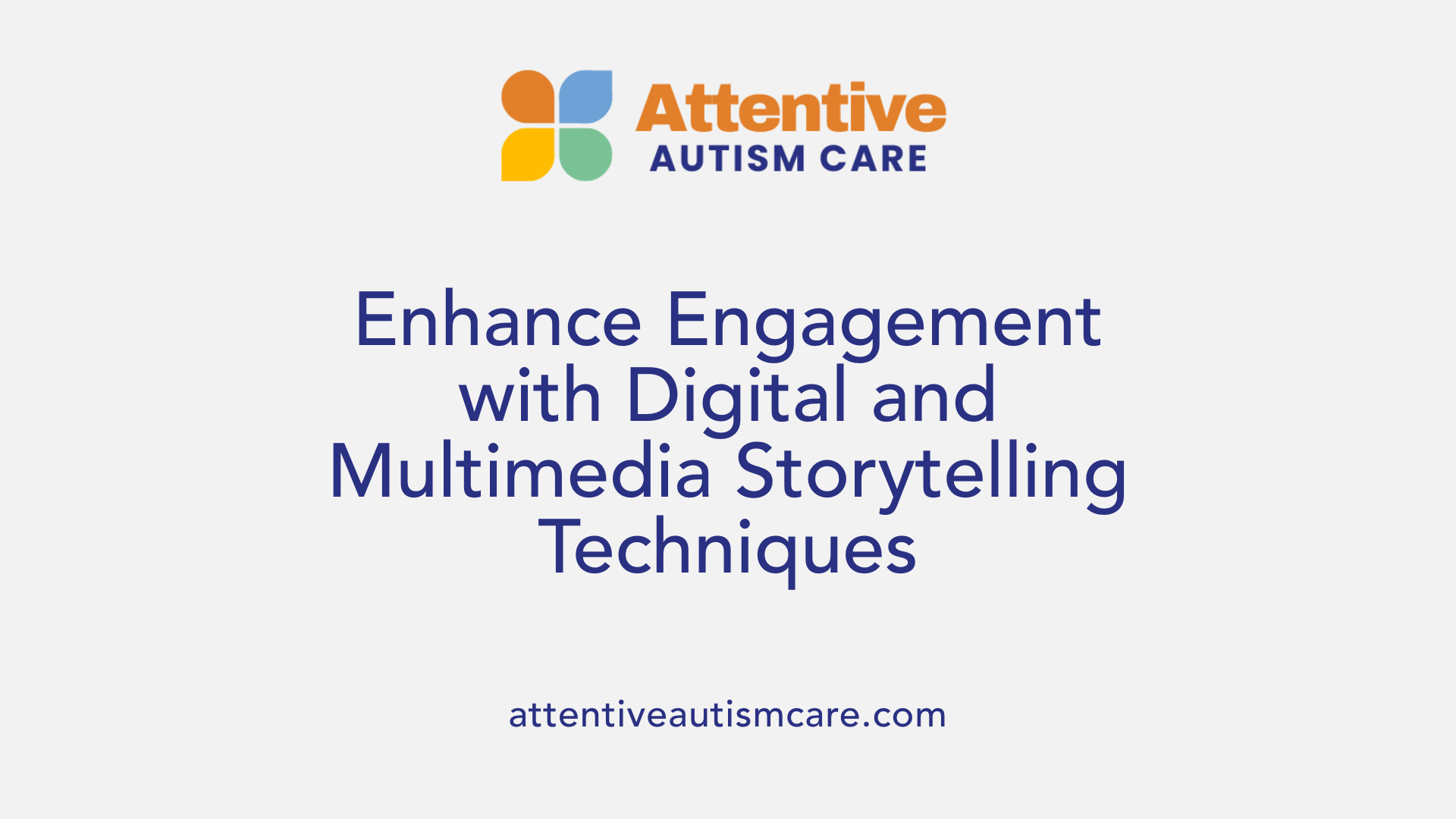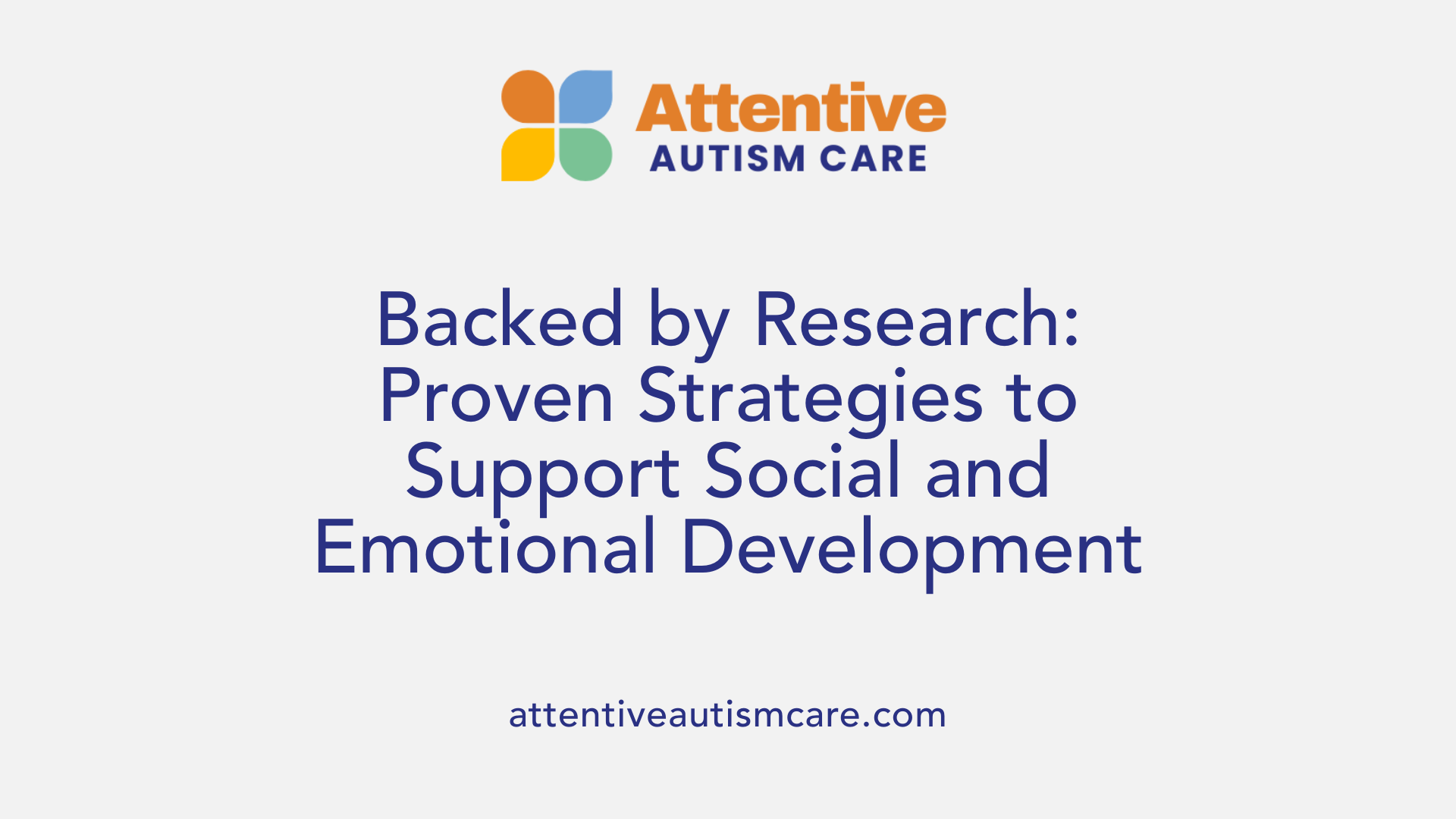How to Use Story-Based Learning to Support Autism Education
Harnessing the Power of Storytelling to Enhance Autism Education

Introduction to Story-Based Learning for Autism Support
Story-based learning is an effective educational approach that leverages the natural affinity many individuals with autism have for stories and visual supports. This method provides tailored social stories and narratives that help children understand social norms, reduce anxiety, and develop essential social and emotional skills. With an emphasis on personalized, engaging content, educators can create meaningful learning experiences that foster independence and social participation.
Fundamentals of Using Story-Based Learning in Autism Education
What are the general methods and techniques for using story-based learning to support autism education?
Story-based learning plays a vital role in supporting individuals with autism spectrum disorder (ASD) by utilizing personalized stories and narratives that address social, emotional, and behavioral skills. A prevalent method involves crafting social stories, which are short, individualized books that depict specific social situations, routines, or behaviors. These stories often include detailed descriptions of settings, expected actions, and social cues, making complex concepts more accessible.
Creating visual supports such as pictures, symbols, and comic strip conversations enhances understanding by providing clear, concrete cues. Digital tools and multimedia formats like PowerPoint presentations, interactive apps, or digital storybooks are increasingly used to make stories engaging and easy to access. These multimedia elements can include branching scenarios that allow children to choose responses, reinforcing decision-making skills in social contexts.
In addition to story creation, structured activities such as reading sessions, role-playing, and discussion prompts are integral. These activities facilitate active participation, allowing children to practice and internalize social responses within safe and guided environments. For example, teachers or therapists might read a social story aloud and then role-play the scenario, helping children understand and rehearse appropriate behaviors.
Furthermore, data collection and ongoing review are critical for tailoring interventions. Educators and therapists observe behaviors and responses during story-based activities, adjusting stories or strategies based on what works best for the individual child.
Research highlights that incorporating multimedia supports—like animations, videos, and interactive story apps—can significantly enhance comprehension and engagement. These tools also enable children to practice skills independently, fostering greater autonomy.
Despite the effectiveness, it’s important to note that social stories work best when integrated with other evidence-based practices, such as visual schedules, prompting techniques, and behavioral reinforcement strategies. Combining these approaches provides a comprehensive framework suited to each child's unique needs.
In conclusion, using story-based learning in autism education involves a blend of personalized storytelling, visual supports, multimedia tools, and interactive activities. This multi-faceted approach creates a supportive learning environment that can improve social understanding, reduce challenging behaviors, and promote skill generalization across different settings.
Effectively Utilizing Social Stories and Narratives as Educational Tools

How can social stories and social narratives be effectively utilized as educational tools for individuals with autism?
Social stories and social narratives are powerful methods for teaching social skills to children with autism. They work by providing clear, personalized explanations of social situations, which help children understand what is expected of them and how to behave appropriately.
A successful approach involves customizing each story to match the child's developmental level and specific needs. This means including details about the particular social scenario the child will encounter, such as a trip to the supermarket or visiting the doctor.
Visual supports play a crucial role in enhancing understanding. Many social stories incorporate pictures, symbols, or digital tools like apps or boards to illustrate key points. These visual cues help children with autism process information more effectively and make the story more engaging.
Regular practice is essential for the stories to have a lasting impact. Repeated reading of social stories helps children internalize social cues, responses, and routines. Reading can be done at home, in school, or in therapy sessions, and should be consistent, especially immediately before engaging in the target activity.
Research highlights that combining social stories with other activities like role-playing or answering comprehension questions further improves social outcomes. For example, children who practice turn-taking or initiating conversations after reading a social story tend to develop these skills more rapidly.
Implementing social stories across different settings enhances their effectiveness. In inclusive classrooms, they support peer interactions and help manage transitions. In specialized or home settings, they reinforce expected behaviors and reduce anxiety related to unfamiliar situations.
In summary, the effective use of social stories involves individual customization, incorporating visual supports, consistent practice, and integration with practical activities. This comprehensive approach promotes better understanding, reduces problem behaviors, and encourages positive social participation.
Evidence-Based Strategies for Enhancing Social and Emotional Skills
What evidence-based strategies support the use of story-based learning to improve social and emotional skills in autistic learners?
Research shows that using story-based learning methods, especially social stories, can significantly enhance social and emotional skills in children with autism. These strategies are effective when they are personalized, meaning they are tailored to the specific needs and experiences of each child. Customization often involves including visual supports, such as pictures, symbols, or digital tools, which help children better understand and remember the social cues and responses illustrated in the stories.
Moreover, multimedia elements like videos, music, or animations can make social stories more engaging and easier to comprehend. For example, a social story about visiting the doctor might include a short video showing a typical visit, helping the child visualize and prepare for the experience. Such multimedia supports extend the story's reach and cater to various learning styles.
Integrating social stories with other evidence-based interventions can boost their effectiveness. Techniques such as video modeling, positive reinforcement, prompting, or behavioral skills training can be combined with stories to target a wider range of social behaviors.
Delivery context plays a crucial role as well. Implementing social stories in real-life environments—such as classrooms, homes, or community settings—has shown to produce larger improvements. Naturalistic settings often provide relevant cues and immediate opportunities for practice, making the learning more meaningful.
However, it’s important to approach these strategies with balanced expectations. Although evidence supports their use, social stories should be part of a comprehensive, individualized approach. Continuous monitoring of the child's progress ensures that the intervention remains relevant and effective.
Practical applications of these strategies include:
- Developing personalized stories with clear language and illustrations tailored to the child's social challenges.
- Incorporating multimedia such as videos, music, or digital apps like Pogo Boards or Picto-Selector.
- Combining social stories with positive reinforcement or prompting strategies during social skills training.
- Using stories frequently in natural settings to promote generalization and real-world application.
This multi-faceted, individualized approach enhances the benefits of social stories, helping children with autism improve their understanding, emotional regulation, and social participation.
| Strategy Type | Description | Example |
|---|---|---|
| Personalization | Tailoring stories to individual needs with visuals | Custom stories about daily routines for a child with specific anxieties |
| Multimedia Integration | Using videos, music, or animations | Video stories showing social situations like playground interactions |
| Combined Interventions | Merging stories with other evidence-based methods | Pairing social stories with verbal prompting during social skills sessions |
| Naturalistic Use | Applying stories in real-world settings | Implementing social stories at school during transitions to new activities |
By carefully blending these strategies, educators, therapists, and parents can create a supportive framework that fosters social and emotional growth in children on the autism spectrum.
Creating and Adapting Story-Based Materials for Educational Success

How can educators create, adapt, and utilize story-based materials effectively to support autism education?
Educators play a vital role in supporting children with autism through the careful creation and adaptation of story-based materials. These materials often focus on key social situations and are designed to foster understanding, communication, and positive behaviors.
One effective approach involves integrating visual supports and interactive elements into stories. Visual cues like pictures, symbols, and digital images help clarify social cues and expectations, making abstract concepts more concrete for learners. Incorporating tools such as puppets, real objects, or interactive activities like role-playing encourages active participation and enhances engagement.
To ensure relevance and effectiveness, social stories are personalized based on the child's unique needs. Educators collaborate with psychologists, speech-language pathologists, and caregivers to tailor stories that reflect familiar settings and typical routines, such as visiting the doctor, shopping, or playing at the park. Regular practice of these stories in consistent contexts helps reinforce understanding and promote lasting behavioral change.
Using digital tools and story kits further enriches the learning experience. Applications like Pogo Boards, Picto-Selector, and Boardmaker enable educators to craft customized social narratives easily. These tools often include built-in templates and visual libraries, streamlining the creation process while ensuring visual consistency.
Story kits, which contain pre-made or adaptable stories complete with pictures and scripts, serve as versatile resources. They facilitate storytelling sessions, role plays, and discussion activities, helping children grasp social norms and responses more effectively.
Interactive storytelling methods, such as highlight/doodle techniques or assigning roles during read-alouds, promote active learning. These strategies enable children to connect personally with the content, encouraging language development and social understanding.
Beyond storytelling, incorporating activities that foster emotional insight—like acting out scenarios or collaborative storytelling—can improve social engagement and self-regulation. For example, acting out a social story helps children understand emotions and appropriate reactions in a safe environment.
Consistent review and adaptation of story materials are crucial. As children develop, their needs and comprehension levels change, necessitating updates to stories and activities. Regular assessments and feedback from behavioral professionals ensure that the story-based interventions remain effective.
In summary, effective creation and use of story-based materials require integrating visual supports, personalizing content, leveraging digital tools, and reinforcing with interactive activities. Such strategies help educators foster meaningful learning, support behavioral growth, and enhance social skills in children with autism.
Implementing Digital Tools to Enhance Story-Based Learning

How can digital tools and multimedia formats support the use of story-based learning for autistic learners?
Using digital tools and multimedia formats, such as iPads and story apps, can significantly support story-based learning for autistic learners by reducing perceived anxiety and increasing understanding prior to new events or transitions.
Research indicates that digitally-mediated social stories improve children's comprehension and lessen anxiety about upcoming situations. For example, a study involving a one-week digital intervention showed notable improvements in children’s understanding and emotional closeness to their social story goals, while also decreasing their anxiety before events like summer camps.
These digital versions of social stories often include interactive features such as branching scenarios, visual cues, and multimedia components like videos and sounds. These elements make the stories more engaging and accessible, supporting explicit processing—a cognitive style where individuals think about information in a step-by-step manner.
Children generally prefer reading stories via digital devices over traditional paper books. Feedback from kids showed ratings mostly in the 'good' to 'brilliant' range, with all children favoring stories on iPads. This preference, along with the capability to customize stories in real-time, makes digital tools highly effective.
Furthermore, digital stories can be delivered faithfully, ensuring consistency and high fidelity to the intended intervention. They can be tailored to individual needs by adjusting content or adding cues, which helps reinforce social skills through repeated, engaging practice.
The ability to adapt the story content and presentation style allows educators and therapists to address specific comprehension challenges or anxiety issues faced by autistic children. As a result, digital story-based learning creates a supportive environment promoting better understanding and social engagement in real-world situations.
Integrating technology to address comprehension and anxiety
Digital applications contribute to improved reading comprehension by supporting strategies like building background knowledge and modeling thought processes through multimedia tools. For example, think-aloud techniques can be animated through videos, helping children understand how to interpret social cues.
Activities like acting out scenes or role-play through digital stories incorporate drama, which enhances emotional understanding and empathy. This approach makes the social concepts more concrete and memorable.
Reciprocal teaching methods, often integrated into digital platforms, encourage children to actively participate by summarizing, questioning, and clarifying content. These interactions can be recorded or videotaped, further reinforcing learning.
Retelling stories in their own words is another effective strategy, with digital tools allowing children to express understanding through drawings, videos, or collaborative efforts.
Overall, using digital tools not only improves comprehension but also reduces anxiety related to social transitions and unfamiliar settings. By providing predictable, engaging, and customizable content, these tools support children with autism in navigating social environments with greater confidence and skill.
Research Evidence and Efficacy of Social Stories

What evidence-based strategies support the use of story-based learning to improve social and emotional skills in autistic learners?
Research into social stories and their application reveals several effective strategies that enhance social and emotional development in autistic children. A primary approach involves personalizing social stories to address each child's unique needs, ensuring relevance and engagement. This customization often includes visual supports, such as pictures, symbols, or digital tools like Pogo Boards and Picto-Selector, which help children better understand the narrative.
Integrating multimedia elements, such as videos, with social stories can further boost comprehension and interest. For example, short video clips or musical adaptations make the stories more engaging and accessible, especially for children who benefit from auditory or visual stimuli.
Combining social stories with other evidence-based practices enhances their effectiveness. Strategies like video modeling, reinforcement, prompting, and behavioral skills training complement social stories by providing multiple avenues for learning. These combined methods can target a broad range of social behaviors, from understanding social cues to managing transitions or reducing disruptive behaviors.
Delivering social stories in natural settings, especially mainstream classrooms, has shown to result in larger effects. The context where stories are used matters significantly, as children tend to generalize skills better when interventions are embedded in their everyday environments.
Professional input is crucial—colleagues such as speech pathologists and psychologists help ensure stories are developmentally appropriate and aligned with individual goals. They also assist in using data collection tools to monitor progress and adjust stories as needed.
While evidence supports a positive impact of social stories, it is essential to view them as part of comprehensive intervention plans. They are most effective when embedded into routines and used consistently, ideally immediately before social situations or transitions to facilitate understanding.
In summary, successful strategies include personalization, multimedia integration, combining with evidence-based techniques, and contextualized delivery within natural environments. Utilization of these strategies helps facilitate social and emotional skill development, making social stories a valuable component of autism support programs.
Conclusion and Future Directions in Story-Based Autism Education
How can educators create, adapt, and utilize story-based materials effectively to support autism education?
Educators play a vital role in supporting children with autism by developing and tailoring story-based resources that address social skills, routines, and behavior management. These materials should integrate pertinent social scenarios, visual supports, and interactive elements such as puppets, pictures, and objects to actively engage learners.
Creating effective story-based tools involves using adapted books and story kits that reflect real-life situations a child might face, like visiting the doctor or navigating the playground. Highlighting and doodling techniques can be incorporated during story reading to emphasize important details and encourage participation.
Role assignments during read-aloud sessions can also promote active engagement and understanding. For example, assigning a child to
Summary and Future Outlook
Story-based learning, particularly through social stories and narratives, offers a powerful, adaptable approach to supporting children with autism. When tailored to individual needs and combined with visual aids, multimedia, and other evidence-based strategies, it can significantly improve social understanding, emotional regulation, and behavior. Emerging research and technological innovations, including digital storytelling platforms, show promising potential to further enhance the efficacy and accessibility of these methods. As educators continue to refine their approaches and explore new tools, story-based learning is poised to play an increasingly vital role in comprehensive autism education, fostering better social participation and quality of life for learners.
References
- Free library of Social Stories for Autism
- Social stories and autism
- Digitally-Mediated Social Stories Support Children on the ...
- Tell Me About the Story: Comprehension Strategies for ...
- Writing and Using Social Narratives in All Environments
- “A scoping review: Social stories supporting behavior ...
- "The Effectiveness of Social stories as Behavior Intervention ...
- A Social StoriesTm Intervention Package for Students with ...
- Social Stories for Autistic Children – The Ultimate Guide
- Social stories and autism



































































































